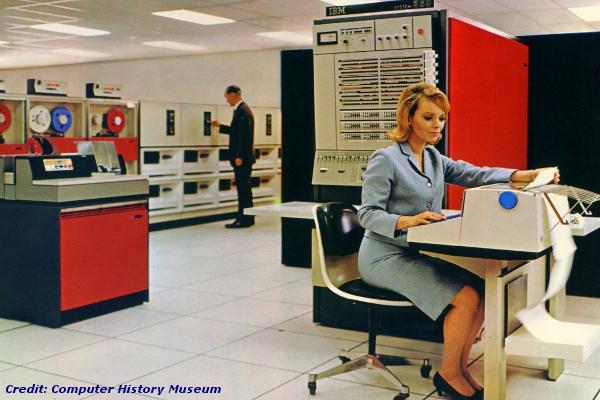
John Roberts, research vice-president at Gartner’s CIO and executive leadership research team, says during the early 1980s organisations recognised “IT people were not just providing calculator systems but really delivering information.” This was despite the fact that enterprises were still generally building bespoke applications.
He recalls working in the distribution department of Mobil Oil Australia in 1980 using customised code to build an order taking and truck delivery optimisation system.
“I remember one of our great concerns moving from a system where customers would ring up their individual depot and place an order to an Australia-wide system, was [whether] the 1800 numbers would work.” Roberts went on to become general manager of information systems at the company.
The mainframe is dead; long live the CIO
Gartner’s Roberts recalls newspaper headlines from the mid-1990s stating that mainframe computing was dead, giving way to a new breed of open systems and integrated enterprise resource planning (ERP) applications.
“It was probably around that timeframe when the CIO was no longer delivering [technology] to individual managers [but] had a broader information delivery responsibility across the organisation.”
“I think that once you have an enterprise-grade application, then it’s no longer the IT manager delivering to the requests of individual line managers, for example, a purchasing manager saying built me a purchasing or order taking system or whatever it might be,” Roberts says.
“The CIO no longer had an individual brief but rather started to operate as a member of the C-level suite because enterprise information was clearly critical right across the organisation.”
Philipson believes that although the CIO role has become more common since the mid-1990s, there is still a “real mishmash” of job titles, depending on the size and type of organisation.
In fact, he believes that often there is no real distinction between the CIO, IT manager and MIS manager.
“There’s always one person in an organisation who is the senior IT guy and their role is always reasonably similar,” he says. How they differ is more a product of the size of the company. Any company large enough to have an IT department by definition has to have an IT manager. "The title doesn’t make that big a difference to what their role is,” he says.
Philipson continues: “You get guys working for 30-man organisations who run a dozen PCs who are called CIOs. [There’s a] misconception that if you are a CIO and you are not an IT manager or MIS manager, you somehow have a more senior or more strategic role.
“That shouldn’t be the case, but it sometimes is; in a large organisation you might have a CIO and half a dozen IT managers under you. There is no point at which you suddenly morph from being an MIS manager to a CIO.”
He agrees that a CIO should be driving business strategy because they are at board level, they are a C-level executive. But in practice, that didn’t happen, he says.
“Very few senior IT managers ever got beyond being IT managers and that’s still the case now,” he says. “With very few exceptions, senior management of an organisation always regarded the senior IT guy, whether he was called CIO or not, as [the IT guy].
He recalls conversations with CIOs in the mid-'90s where they felt they weren’t getting the credit they deserved.
“Very few organisations had true CIOs in the way that they were true board members and part of the senior management team.”
In most cases, this is still the situation today.
Next week in the second and final part of this series, we will examine the modern CIO and how the role is expected to evolve in the future, particularly with the increasing popularity of utility and cloud-based computing models.
Join the CIO Australia group on LinkedIn. The group is open to CIOs, IT Directors, COOs, CTOs and senior IT managers.
